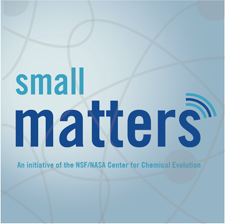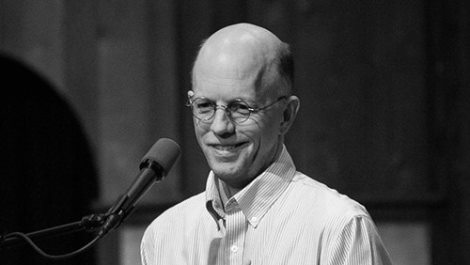Small Matters

Small Matters is a science storytelling project developed in response to a National Science Foundation (NSF) supplemental funding opportunity designed to partner an existing NSF Center for Chemical Innovation with an informal science educator or organization (Award #1004570; funded via NSF Chemistry and AISL). I (Meisa Salaita, Director for Education & Outreach for the Center for Chemical Evolution), and Ari Daniel, independent radio and multimedia producer and science journalist, are collaborating on this project intended to increase chemical literacy in the general public and promote partnerships between scientists and informal science educators.
Research Background
Educators have long used storytelling to stimulate students’ critical thinking skills across and within disciplines, demonstrating an improvement in comprehension and logical thinking, enhancing memory, and creating a motivation and enthusiasm for learning [1]. In addition, research from cognitive scientists and developmental psychologists has confirmed that the human brain relies heavily on stories as a primary road map for understanding, making sense of the world, and remembering. [2] Within science, storytelling allows learners to experience the how and why of scientific inquiry, including the intellectual and human struggles of the scientists making discoveries. [3]
Project Implementation
Accordingly, our project uses multimedia and live performance to engage the public in learning about chemistry through storytelling. We have developed a series of radio stories entitled “Small Matters” (our tagline is: “the audio series where we sweat the little things”) aimed at enriching public science literacy, especially within the chemical sciences. The title plays off the ideas that: 1) we focus our attention on the chemicals and molecules all around us and 2) the tiny aspects of our world are incredibly important. These stories are crafted in a public radio narrative style. They have been posted on the Public Radio Exchange and the “Small Matters” website, and have been disseminated through a variety of broadcast media outlets, including the nationally distributed program Living on Earth and local Atlanta public radio station WABE.

In addition to our audio pieces, we have taken some of the stories we uncovered and brought them to live audiences, integrating chemistry, journalism, and the arts to create a human connection between our scientists and the public. The radio stories were woven together with performances of poetry, comedy, and satire in collaboration with a literary performing arts group called The Encyclopedia Show to create a live variety show (May 2013 and March 2014). In addition, scientists identified through our production of “Small Matters” were trained in storytelling techniques and brought together for an evening of live storytelling in Atlanta with The Story Collider (March 2014).
One of the challenges that emerged in producing “Small Matters” was how to determine the best way to tell radio stories about chemistry. Because of the sometimes intangible nature of chemical research, often the high quality of the research on its own was not sufficient for us to adequately portray the significance of a particular chemist’s work. We quickly realized that we needed to make sure the chemists whose research we were profiling also had a compelling human story to share. We have also worked hard to make difficult chemistry concepts simple to understand when heard over the radio, relying on analogies, evocative descriptions, and strong narrative writing.
Next Steps
“Small Matters” is evolving as a radio series. We will produce three more Atlanta-based chemistry radio stories to complete the scope of the original proposal. Further, because of the relationship now built between the NSF/NASA Center for Chemical Evolution and producer Ari Daniel, we anticipate dedicating some of the Center’s operational outreach funding to commission him to produce several stories each year going forward. Another future goal is to connect Shapiro with chemical research being conducted at other NSF Centers for Chemical Innovation, further strengthening ties between these Centers and informal science education.
References:
1. Hartings, M.R.; Fahy, D. "Communicating Chemistry for Public Engagement." Nature Chemistry. 3 (2011): 674-677.
2. Haven, K. Story Proof. Westport, Connecticut: Libraries Unlimited, 2007.
3. Kokkotas, P.; Rizaki, A.; Malamitsa, K. "Storytelling as a Strategy for Understanding Concepts of Electricity and Electromagnetism." Interchange. 41 (2010): 379-405.